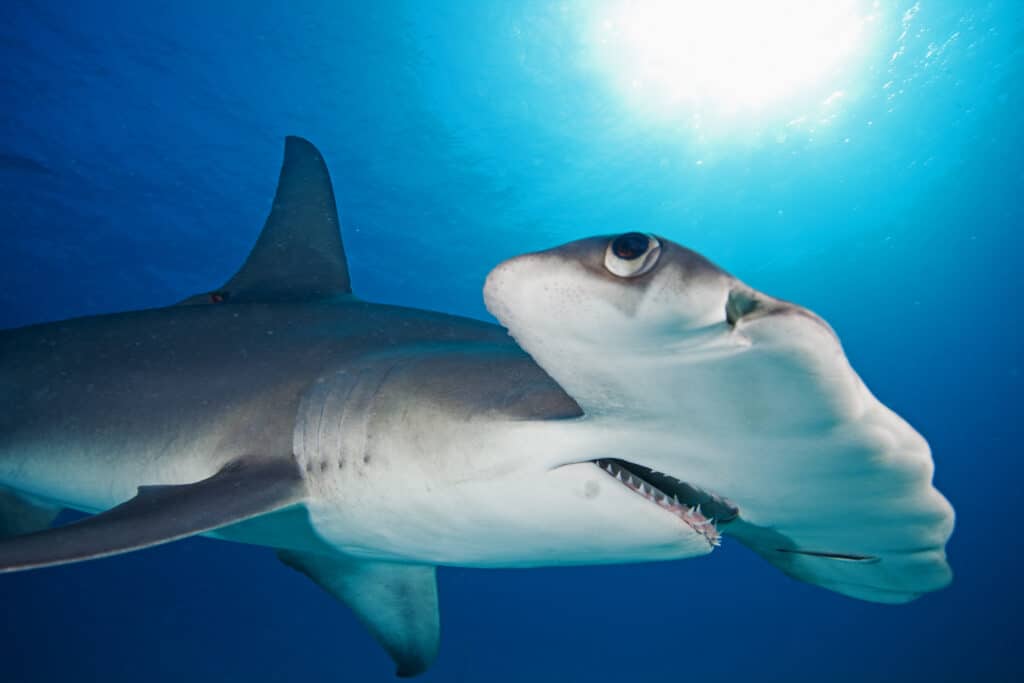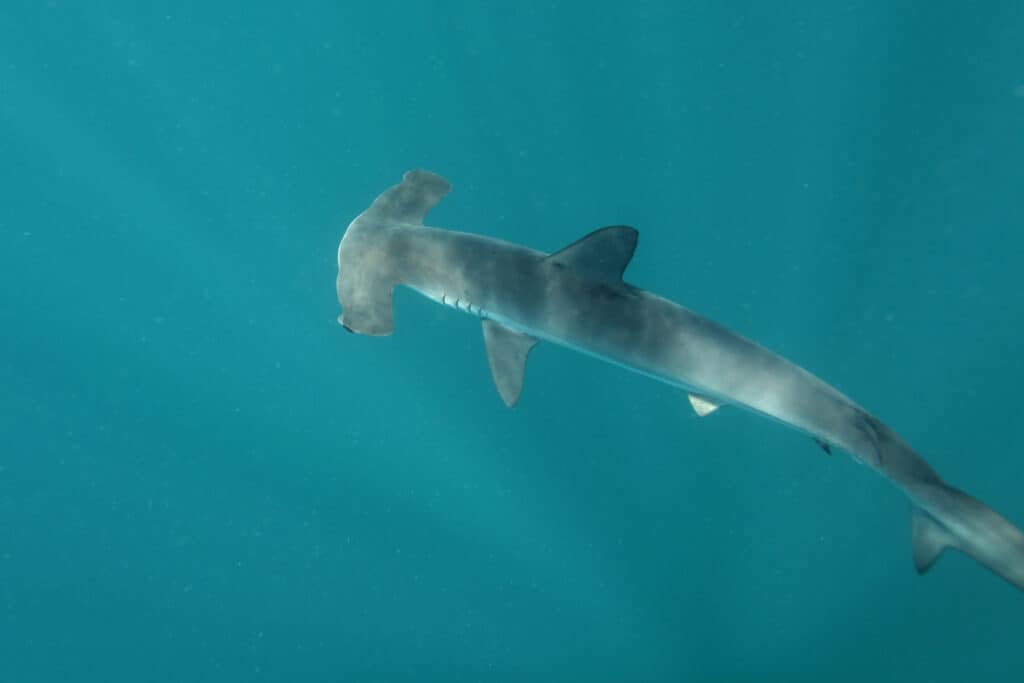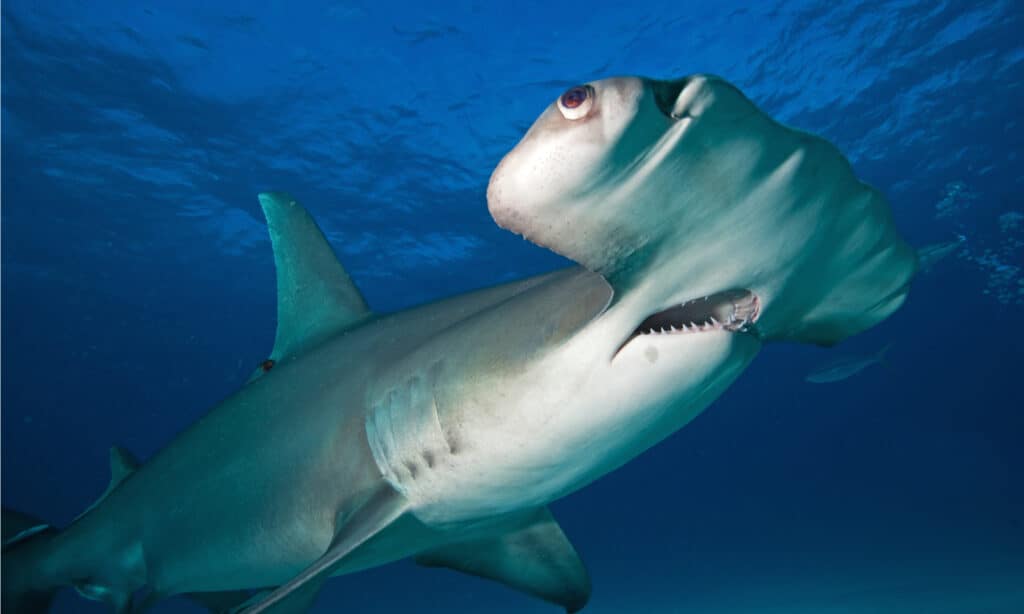Continue reading for our analysis...

In this fascinating clip, we see two nervous divers being circled by some sharks. Amongst them is a hammerhead, and this big sea creature shows no intention of leaving the humans alone. Even though they are armed with spearguns, it’s clear that these guys are pretty spooked. Eventually, they haul themselves back into their boat. As the clip shows, you never know what you are going to meet when you go diving!
What Exactly Is a Hammerhead Shark?

Ten species of hammerheads are usually quite friendly!
©Martin Prochazkacz/Shutterstock.com
Hammerheads are not a single species. They are a group of sharks in the Sphyrnidae family, and there are ten species in total. Nine are in the Sphyrna genus, and one is in the Eusphyra genus on its own. Notable members of the group include the Great Hammerhead (Sphyrna mokarran) and the Carolina Hammerhead (Sphyrna gilberti). They get their common name from the ‘hammer’ shape of their heads.
Why Is a Hammerhead’s Head Shaped Like That?

Smooth hammerhead shark is one of 10 different types of hammerheads.
©Alessandro De Maddalena/Shutterstock.com
The hammer shape at the front of the shark’s head is called the cephalofoil. The shark’s eyes are located at either end of it, and that offers the shark incredible binocular vision and depth perception. Also, experts now believe that it contains electroreceptor organs that allow the shark to detect magnetic fields and navigate accurately around the oceans. The organs are called ‘Ampullae of Lorenzini’, and these sharks move their heads up and down and from side to side to get a complete picture of the terrain.
Despite their wide heads, hammerhead sharks have quite small mouths that contain serrated and triangular teeth.
Are Hammerheads Normally Aggressive Towards Humans?

The eyes of Great Hammerhead Sharks gives them excellent eyesight and a 360 view. This makes them great hunters.
©Martin Prochazkacz/Shutterstock.com
When you are being circled by sharks, it is hard to tell if they are being inquisitive or aggressive. Both are quite scary!
Most of the time, hammerheads are simply curious. Many of them would rather shy away from humans. However, it is never a good idea to startle them or make them feel threatened as they could retaliate. After all, this is their home.
Which Animals Eat Hammerheads?

Many types of sharks, including hammerheads, are endangered by the commercial fishing industry.
©Andreas Altenburger/iStock via Getty Images
Humans are their most dangerous predators! We kill them to obtain liver oil to make vitamins and fins for shark fin soup. Humans are by far the biggest threat to hammerhead sharks because of our over-fishing and hunting practices. We have been harvesting hammerheads for their fins, liver oil, and meat for centuries. This has caused a drastic decline in the number of these animals in certain areas. Additionally, bycatch (accidental capture of non-target species) due to commercial fishing practices may also be responsible for declining populations of hammerhead sharks.
Also, they are hunted by tiger sharks, great white sharks, and killer whales. As we see in this clip, some congregate in groups, which may help them to keep safe.
Other predators of hammerhead sharks include large fish, like king mackerel and giant morays. Additionally, they may also be eaten by sea turtles, stingrays, and other larger shark species. Hammerheads feed on a variety of prey, including squid, octopus, small fishes, and crustaceans.
Thank you for reading! Have some feedback for us? Contact the AZ Animals editorial team.







